#Valeriana pauciflora
Explore tagged Tumblr posts
Photo




Valeriana pauciflora , Largeflower Valerian
Iodanthus pinnatifidus , Purple Rocket
Both are pictured here in rich mesic woods, however both are found more commonly in alluvial flood plain woods and in riparian zones of minor tributary.
Valeriana pauciflora is considered a core ILP species for the most part though it breaches into Appalachia more so than the other companion species pictured. My favorite part is it’s super disjunct super locally common population in Northern MI.
Iodanthus pinnatifidus is the only member of the genus in north America and has a core in the ILP making it’s way into the Northwestern sections of the Appalachian Mountains and a bit into the Ozarks and central USA.

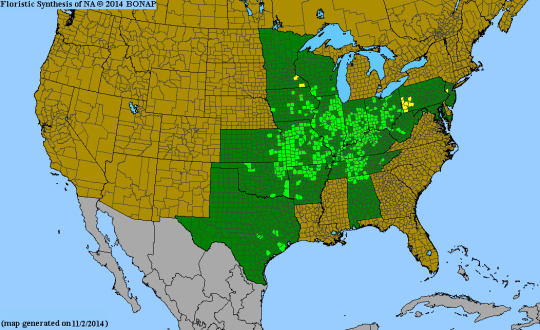
22 notes
·
View notes
Photo




Large-flowered valerian (Valeriana pauciflora) is an uncommon but enchanting perennial herb with a limited distribution from the Ohio River Valley east to the the Potomac River Basin. This shade-loving plant is very picky about where it grows - typically in the moist, rich soil associated with high-quality floodplain forests and seasonal streambeds. But if you’re lucky enough to find it in bloom from late spring to early summer, you’ll soon wish it was growing in your garden. The plant’s delicate, tubular, white to pink flowers, each with five spreading lobes and three dramatically-extended stamens, emerge from a dense panicle at the end of the stem. The cauline leaves are distinctive and immediately recognizable - opposite and compound with three to five leaflets each, the terminal leaflet being the largest of the group. Large-flowered valerian is endangered in many parts of it range due to habit loss and competition from invasive species, such as garlic mustard and greater celandine. Conservation of high-quality riparian habitat is the key to its recovery. The photos above were taken along the Mon River Trail.
#appalachia#vandalia#west virginia#spring#wildflowers#flora#valeriana#large-flowered valerian#large-flower valerian#mon river trail
26 notes
·
View notes
Note
You're just what I need right now, bless you. My story is going to take place in basically our world, but no oceans or the like to connect the continents. A major role is going to be played by plants and flowers that can be used as seasoning or for tea - basically, that can be consumed. I'm struggling with finding information on what plants would be found in the region the story is taking place. (part 1)
Could you link me to any information on plants, spices and herbs native to the Eastern Woodlands region of North America / the Washington D.C.-Canada region? Or, more specifically, is stuff like Hibiscus, juniper, spearmint, marjoram, damiana or valerian native to the states? I’m not even sure there are any digestable, flavour-carrying plants in that region, to be perfectly honest… I’d appreciate any help you can give me, I’ve been researching for ages, but most come from further South…
Hi iamnotoneofthem!Of the plants that you listed, Juniperus virginiana L. and Hibiscus moscheutos L. are both native to this entire region that you are looking at. Valeriana pauciflora is native to the lower portion of the region, from Pennsylvania south. Valeriana uliginosa is native to the upper portion of the region, from New York state north. Spearmint and marjoram are native to Europe and Asia and were only introduced to North America. Damiana is native to Texas and Central America, as well as the Caribbean islands.
Some other plants you might consider are:New Jersey tea Ceanothus americanus -leaves used as teaSpicebush Lindera benzoin - berries dried into savory, peppery seasoningSassafras Sassafras albidum - root provides “root beer” flavor, leaves are primary ingredient in Filé powder, used to flavor and thicken soups and stewsGroundnut Apios americana - beans and underground tubers are edible
I really recommend looking through this list of edible North American Eastern Woodlands native plants. It provides specific information about what parts of these plants are edible along with any issues such as needing to prepare a certain way to avoid toxicity.
http://www.perennialsolutions.org/wp-content/uploads/2013/04/USEFUL-NATIVE-SPECIES-OF-THE-EASTERN-FOREST.pdf
This is a list of edible plants common in the North American Eastern Woodlands, which means it does not differentiate on if they are native or introduced. It’s really a survival guide, and the list is shorter, but there is a lot more detail about what parts of plants can be edible and how to prepare the ones that need special preparation.
https://ruralsurvival.info/downloads/Unofficial-Hunger-Games-Edible-Plants-Download.pdf
I also want to encourage you to think about how not having oceans would change our world. Our world is the way it is in large part because the majority of it is oceans. The climate zones and ecological regions that we see are in large part associated with out much moisture the areas receive from oceans.
I hope this helps.~*Mod Den*~
Disclaimer
This blog is intended as writing advice only. This blog and its mods are not responsible for accidents, injuries or other consequences of using this advice for real world situations or in any way that said advice was not intended.
8 notes
·
View notes
Photo

Valeriana
Valeriana officinalis V. montana Valeriana is a genus of flowering plants in the family Caprifoliaceae, members of which may by commonly known as valerians. It contains many species, including the garden valerian, Valeriana officinalis. Some species are native to Europe, others to North America and South America (especially in the Andes). Species include: Valeriana acutiloba Valeriana adscendens Valeriana aequiloba Valeriana agrimonifolia Valeriana albonervata Valeriana alliariifolia Valeriana altaica Valeriana alypifolia Valeriana amurensis Valeriana apiifolia Valeriana arborea Valeriana arizonica Valeriana asarifolia Valeriana asplenifolia Valeriana asterothrix Valeriana atacamensis Valeriana baltana Valeriana bambusicaulis Valeriana barbareifolia Valeriana barbulata Valeriana beamanii Valeriana bertiscea Valeriana boliviana Valeriana bornmuelleri Valeriana bracteata Valeriana bracteosa Valeriana bractescens Valeriana bridgesii Valeriana briquetiana Valeriana bryophila Valeriana bulbosa Valeriana buxifolia Valeriana calcicola Valeriana californica Valeriana calvescens Valeriana capensis Valeriana capitata Valeriana carnosa Valeriana castellanosii Valeriana catharinensis Valeriana celtica - Alpine valerian or valerian spikenard Valeriana cephalantha Valeriana ceratophylla Valeriana cernua Valeriana cerosifolia Valeriana chaerophylloides Valeriana chamaedryfolia Valeriana chiapensis Valeriana chilensis Valeriana ciliata Valeriana clarionifolia Valeriana clematitis Valeriana coarctata Valeriana coleophylla Valeriana columbiana Valeriana comosa Valeriana condamoana Valeriana connata Valeriana convallarioides Valeriana corymbulosa Valeriana costata Valeriana crassifolia Valeriana crinii Valeriana crispa Valeriana cuatrecasasii Valeriana cucurbitifolia Valeriana cumbemayensis Valeriana daphniflora Valeriana decussata Valeriana deltoidea Valeriana densa Valeriana densiflora Valeriana diffusa Valeriana dinorrhiza Valeriana dioica - marsh valerian Valeriana dioscoridis Valeriana dipsacoides Valeriana dominguensis Valeriana edulis Valeriana effusa Valeriana eichleriana Valeriana elongata Valeriana emmanuelii Valeriana engleriana Valeriana eupatoria Valeriana fauriei Valeriana fedtschenkoi Valeriana ferax Valeriana ficariifolia Valeriana flaccidissima Valeriana flagellifera Valeriana fonkii Valeriana fragilis Valeriana glaziovii Valeriana glechomifolia Valeriana globiflora Valeriana globulariifolia Valeriana globularioides Valeriana globularis Valeriana graciliceps Valeriana granataea Valeriana grandifolia Valeriana grisiana Valeriana grossheimii Valeriana hadros Valeriana hardwickii Valeriana hebecarpa Valeriana hengduanensis Valeriana henrici Valeriana herrerae Valeriana hiemalis Valeriana hirtella Valeriana hirticalyx Valeriana hornschuchiana Valeriana humboldtii Valeriana hyalinorrhiza Valeriana imbricata Valeriana interrupta Valeriana isoetifolia Valeriana jasminoides Valeriana jatamansi Valeriana johannae Valeriana karstenii Valeriana kawakamii Valeriana kilimandscharica Valeriana laciniosa Valeriana lancifolia Valeriana lapathifolia Valeriana laurifolia Valeriana laxiflora Valeriana laxissima Valeriana ledoides Valeriana lepidota Valeriana leptothyrsa Valeriana lesueurii Valeriana leucocarpa Valeriana longiflora Valeriana macbridei Valeriana macrorhiza Valeriana magellanica Valeriana magna Valeriana malvacea Valeriana mandoniana Valeriana mandonii Valeriana mapirensis Valeriana meonantha Valeriana merxmuelleri Valeriana mexicana Valeriana microphylla Valeriana micropterina Valeriana minutiflora Valeriana montana Valeriana moorei Valeriana muelleri Valeriana naidae Valeriana nelsonii Valeriana nigricans Valeriana nivalis Valeriana oaxacana Valeriana oblongifolia Valeriana obovata Valeriana obtusifolia Valeriana occidentalis Valeriana officinalis – garden valerian Valeriana olenaea Valeriana oreocharis Valeriana organensis Valeriana otomiana Valeriana palmatiloba Valeriana palmeri Valeriana paniculata Valeriana papilla Valeriana pardoana Valeriana parvula Valeriana pauciflora Valeriana peltata Valeriana pennellii Valeriana petersenii Valeriana philippiana Valeriana phitosiana Valeriana phu Valeriana phylicoides Valeriana pilosa Valeriana pinnatifida Valeriana plantaginea Valeriana plectritoides Valeriana polemonifolia Valeriana polybotrya Valeriana polyclada Valeriana polystachya Valeriana potopensis Valeriana prionophylla Valeriana procera Valeriana protenta Valeriana pseudofficinalis Valeriana psychrophila Valeriana pubicarpa Valeriana pulchella Valeriana punctata Valeriana pycnantha Valeriana pyramidalis Valeriana pyrenaica Valeriana pyricarpa Valeriana quadrangularis Valeriana quindiensis Valeriana quiroana Valeriana radicalis Valeriana radicata Valeriana reitziana Valeriana renifolia Valeriana rhodoleuca Valeriana robertianifolia Valeriana rosaliana Valeriana rossica Valeriana rufescens Valeriana rumicoides Valeriana rusbyi Valeriana rzedowskiorum Valeriana salicariifolia Valeriana saliunca Valeriana sambucifolia Valeriana samolifolia Valeriana scandens Valeriana scouleri Valeriana secunda Valeriana sedifolia Valeriana selerorum Valeriana senecioides Valeriana septentrionalis Valeriana serrata Valeriana sichuanica Valeriana sisymbriifolia Valeriana sitchensis - Sitka valerian Valeriana smithii Valeriana sorbifolia Valeriana sphaerocarpa Valeriana sphaerocephala Valeriana sphaerophora Valeriana spicata Valeriana spiroflora Valeriana stenophylla Valeriana stenoptera Valeriana stricta Valeriana stuckertii Valeriana subincisa Valeriana supina Valeriana tachirensis Valeriana tafiensis Valeriana tajuvensis Valeriana tanacetifolia Valeriana tangutica Valeriana tatamana Valeriana tessendorffiana Valeriana texana Valeriana tiliifolia Valeriana tomentosa Valeriana transjenisensis Valeriana trichomanes Valeriana trichostoma Valeriana triphylla Valeriana triplinervis Valeriana tripteris Valeriana tuberifera Valeriana tuberosa Valeriana turczaninovii Valeriana turkestanica Valeriana tzotzilana Valeriana ulei Valeriana uliginosa - mountain valerian or marsh valerian Valeriana urbanii Valeriana urticifolia Valeriana vaga Valeriana vaginata Valeriana valdiviana Valeriana velutina Valeriana venezuelana Valeriana verrucosa Valeriana vetasana Valeriana virescens Valeriana virgata Valeriana volkensii Valeriana wallrothii Valeriana warburgii Valeriana weberbaueri Valeriana wolgensis Valeriana zamoranensis Valeriana zapotecana More details Android, Windows
0 notes
Text
The Run from the Roses by Allen Bush
Fallen dogwood petals at home, Louisville, KY. April 23.
I run from roses until mid-April, when my mood changes, as the Kentucky Derby grows near. The Run for the Roses turns me tenderhearted toward roses. It’s complicated.
We have two disease-ravaged and bug-eaten pitiful roses in our garden. I should back up for a second. I’m married to Rose Cooper. (Long accustomed to the joke, she’s OK if you call her Rose Bush.) I’m crazy about Rose. One Rose is all I desire, but I can’t convince her to toss out the other two, mangy roses.
Dutchman’s breeches, Dicentra cuccularia, Wolf Pen Mill. March 31.
And then there is the horse race.
April-flowering dogwoods signal the feverish run-up to the first Saturday in May. The pace quickens as I continue my spring ritual of planting more trees and perennials than I’d first intended in February. I also begin fantasizing about a garland of roses being thrown over the neck of my Derby horse in the winner’s circle at Churchill Downs.
Beaked corn salad, Valerianella radiata, Vanarsdall Road. April 9.
Just as it’s foolish to think I’m going to pick the winner, there will be hits and misses in the garden. There is only one certainty: No place on earth is prettier than Kentucky in April and May.
Blue-eyed Mary, Collinsia verna, near Bald Knob. April 18.
Spring in Kentucky is about anticipation and pacing—casting off a wet, gray winter, and trying to keep up with a maddening bloom sequence from Dutchman’s breeches to lyre-leaf sage. Our garden seems like an afterthought. It can’t compare with the natural grace of Wolf Pen Mill, Bald Knob or Oregon Road.
Guyandotte beauty, Synandra hispidula, near Bald Knob, April 18.
This year’s Kentucky Derby will last for two minutes and change. Doubtful I will pick the winner, but that’s OK. (My money is on Irish War Cry.) In the Derby aftermath, big hats go home and no one will drink a syrupy mint julep for another year.
Philadelphia fleabane, Erigeron philadelphicus, Vanarsdall Road. April 19.
Kentucky’s spring season is more than a horse race.
My two ugly garden roses are on the verge of palliative care.
Largeflower valerian, Valeriana pauciflora, Oregon Road. April 24.
The dogwood blooms faded nearly three weeks ago. But they’ll return. A dogwood has more staying power than a rose.
Lyre-leaf sage, Salvia lyrata, Woodside Road. April 27. Holly Cooper photo.
The lyre-leaf sage, Salvia lyrata, is in bloom in the Bluegrass this week, a few weeks before heat and humidity smother My Beautiful Old Kentucky Home.
Wish me luck on my Derby bet.
The Run from the Roses originally appeared on Garden Rant on May 3, 2017.
from Garden Rant http://gardenrant.com/2017/05/the-run-from-the-roses.html
0 notes
Photo




Large-Flowered Valerian
Valeriana pauciflora
Not much is actually known about the pollination ecology for this species, or rather, the major pollinator. Skippers, hawkmoths, swallowtails, and humming birds are known to visit this species commonly. Its a mesic forest classic and can form large populations along ravene systems where it is most likely to be encountered. My current favorite population is at the Serpent Mound site near Scioto Brush Creek; but, their is a gravel and alluvial bar near Caesar Creek Gorge that never stops amazing me with it’s abundance.
38 notes
·
View notes
Photo
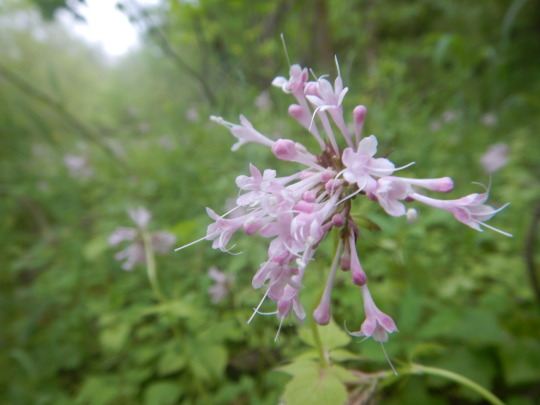
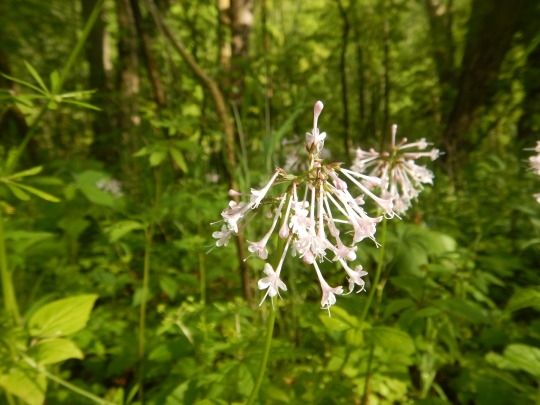
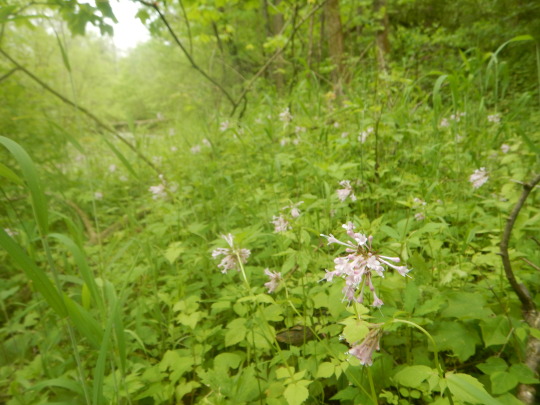
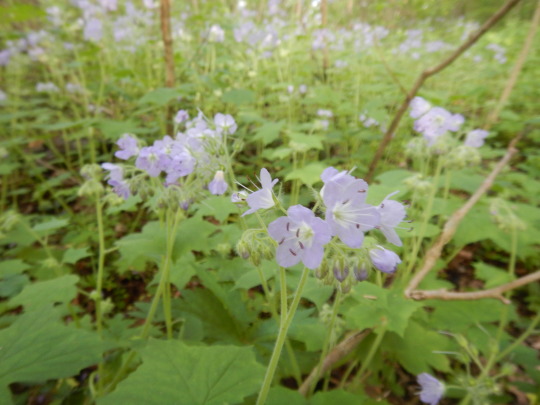

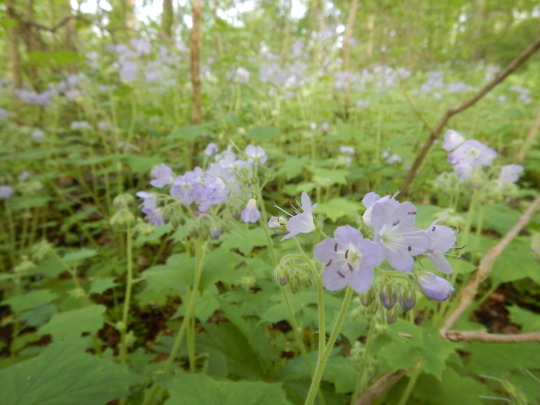
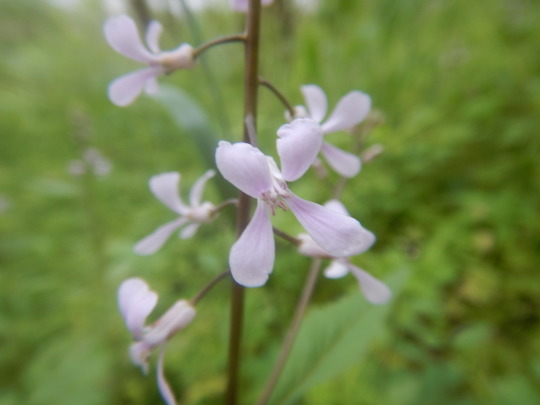

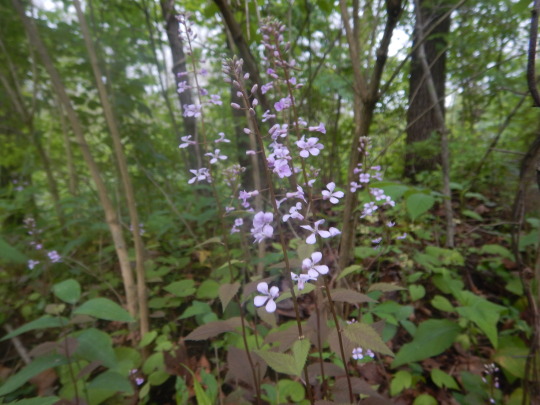
Valeriana pauciflora
Hydrophyllum appendiculatum
Iodanthus pinnatifidus
Riparian classics of temperate hardwood mesic forests, in the midwest and Appalachia.
#Valeriana pauciflora#valeriana#Hydrophyllum appendiculatum#hydrophyllum#iodanthus pinnatifidus#iodanthus#wildflowers#botany#plantblr#ohio#plants#nature photography#nature#ecology#plants of tumblr
21 notes
·
View notes
Photo



Valeriana pauciflora
American Large Flowering Valerian
42 notes
·
View notes
Photo




One of the rarest and most delicate of Central Appalachia’s spring wildflowers is largeflower valerian (Valeriana pauciflora), a graceful and stunning member of the honeysuckle family. This shade-tolerant perennial lives in the humus-rich, mesic floodplain forests of the Ohio and Potomac River Valleys.The plant produces clusters of white to pink flowers with slender, tubular carollas terminating in five spreading lobes; three delicate stamens protrude well beyond each corolla’s lobed mouth. Largeflower valerian requires high-quality habitat and is one of the first native wildflowers to be driven out of its range by invasive species, such as garlic mustard. The photos above were taken along the Mon River Trail.
#appalachia#vandalia#west virginia#spring#wildflowers#valeriana#largeflower valerian#valerian#mon river trail
13 notes
·
View notes